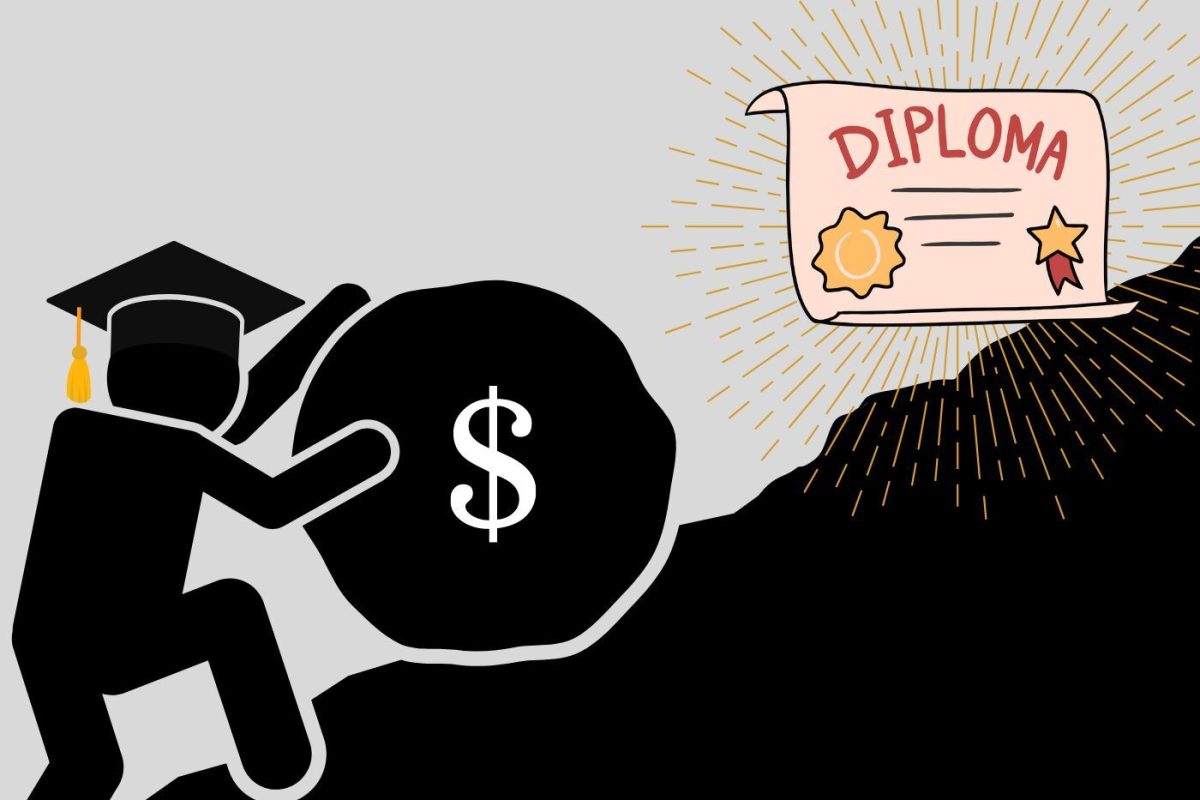With the start of the fall semester, Fordham students can look forward to meeting new people, being exposed to new ideas and potentially assuming thousands of dollars of new debt. In June 2023, the U.S. Supreme Court ruled to block the Biden Administration’s Student Debt Relief Plan, marking another setback to President Biden’s student debt forgiveness initiatives.
Heather Gautney, professor of sociology at Fordham College at Lincoln Center (FCLC), helped shape the Biden campaign’s debt relief policy proposals as the co-chair of the Biden-Sanders Unity Education Task Force which sought to unify the Democratic Party’s positions ahead of the 2020 presidential election.
At the time Gautney was working on the unity task force, the US Department of Education had temporarily paused payments, recollection and interest accrual on student loans due to the COVID-19 lockdown.
“The ever-rising cost of college tuition and fees leaves higher education out of reach — or saddles students with a lifetime of debt.” Heather Gautney, Professor of Sociology at FCLC
“When student debt repayment was on hold people were able to breathe. They were able to get some air so they’re able to see forward financially. And it helped a lot of people,” Gautney said.
The task force recommended the authorization of up to $10,000 in student debt relief among other proposals to alleviate the burden of debt felt by American households.
“The ever-rising cost of college tuition and fees leaves higher education out of reach — or saddles students with a lifetime of debt,” Gautney wrote in the task force’s report.
That recommendation was realized when the Biden administration announced a debt relief plan in August 2022. The plan forgave $10,000 in student loan debt for all borrowers, or up to $20,000 for Pell Grant recipients.
“We weren’t expecting for tuition to increase so much every year. Sometimes I do regret coming to Fordham because of the tuition.” Arantza Rebello Roman, GSBLC ’25
Six Republican-led states legally challenged the debt forgiveness program in October 2022. The U.S. Supreme Court ruled 6-3 in their favor on the grounds that Biden lacked the constitutional authority to authorize the debt relief plan.
Arantza Rebello Roman, Gabelli School of Business at Lincoln Center ’25, said that her family has taken loans from the federal government and private lenders to pay her tuition at Fordham. She said that the rise in Fordham’s tuition prices has strained her family’s finances.
“We weren’t expecting for tuition to increase so much every year,” Rebello Roman said. “Sometimes I do regret coming to Fordham because of the tuition.”
Fordham’s annual tuition has increased by over 14.4% since Rebello Roman enrolled in 2021.
Tibet Ates, FCLC ’26, transferred to Fordham after spending two years at Nassau Community College. Ates said his family assumed roughly $30,000 in debt to pay for his first semester at Fordham.
“Fordham’s increase has been less than the median despite operating in one of the most expensive cities in the country as a result of prudent financial practices.” Joshua Burgher, Vice President for Finance
While his tuition at Nassau was much more affordable, Ates said he hoped his time at Fordham would be more fulfilling.
“I feel like everybody does this, so it’s just okay, which feels a little crazy, but, I mean, I guess that’s the price of a good education,” Ates said.
Joshua Burgher, vice president for finance, said that the university has had to raise tuition prices to meet increasing costs driven by inflation.
“Fordham’s increase has been less than the median despite operating in one of the most expensive cities in the country as a result of prudent financial practices,” Burgher said. “From 2000 to 2020, private four-year colleges and universities in the U.S. increased tuition by an average of 6.2% annually according to the Education Data Initiative. In contrast, our university’s tuition rose by an average of 4.71% per year during the same period.”
Fordham’s tuition hikes reflect the increasing cost of an American college education. Tuition prices rose 4.4% on average since the year 2000 according to the Education Data Initiative, causing more students and their families to assume greater amounts of debt. According to the U.S. Federal Reserve, Americans owed over $1.74 trillion in student loan debt in June 2024, accounting for roughly 9% of total household debt.
In August 2023, the Biden administration announced a different income-driven repayment plan called the Saving on a Valuable Education (SAVE) plan. SAVE would cut monthly undergraduate payments in half, slow the accumulation of unpaid interest and ease the cancellation of debt for low-income borrowers.
This plan was also blocked, leading the Supreme Court to decline to hear the case and making the plan stagnant. On Aug. 28, the Supreme Court halted a bid to revive the SAVE plan, leaving the future of the program in limbo.
Despite these setbacks, current students like Rebello Roman are still hopeful relief will come.
“(Debt relief) is definitely something I’d like to see. I know the loan interest pauses from freshman and sophomore year were really helpful to get loans paid off,” Rebello Roman said. “That relief did help ease a lot of stress that I know a lot of families in America need.”
Gautney expressed she believes debt relief is attainable if people stay active in the fight for forgiveness.
“I think that all of it hinges on the level of activism,” Gautney said. “That’s how you move the dial.”
Sam Bracy contributed reporting to this story.


